How to make Bolognese sauce
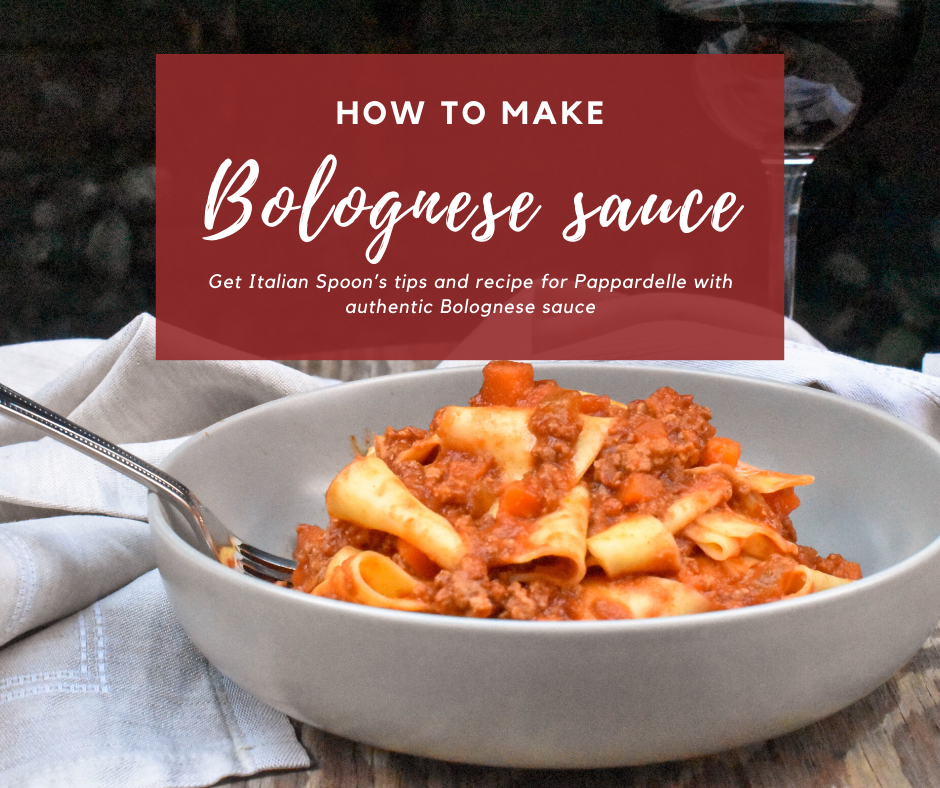
This blog post is dedicated to all the Bolognese lovers out there. Bolognese is a dish that the family will happily eat over and over. It’s rich and comforting, basically everything you want in a pasta dish including minced beef and pork, soffritto, tomato paste, white wine, and milk for creaminess. Sounds simple right? Not exactly and I’ll be the first to admit that in the past, I was doing it all wrong. Read our blog and discover not only how to make the REAL Bolognese sauce perfectly every time.
Bolognese sauce, known in Italian as Ragù alla Bolognese is a meat-based sauce. The authentic recipe was filed in October, 1982 at the Chamber of Commerce in Bologna, Italy. Fast forward 38 years and it is still one of the most popular dishes in Italy and loved throughout the world. Bolognese sauce is one of the foundation recipes of Italian cuisine, served on its own with pasta or as the base for a fabulous lasagne or pasta bake. Before we begin, you may be asking what is the difference between ‘ragù’ and ‘Bolognese’? To answer your question, Ragù alla Bolognese (Bolognese sauce) is a type of ragù – the most popular one in fact. I’ll admit that I have a weakness for slow cooked dishes and slow-cooked beef ragù one of my all-time favourites! Some recipes are sacred. Bolognese is definitely one of them. But don’t just stop there! If you are ever looking for a change from the traditional Bolognese recipe, try our Pappardelle pasta with slow-cooked beef and porcini ragù. It is amazing!
How to make Bolognese sauce
Here are the tips to make an Authentic Bolognese sauce from scratch:
1. Time
Before we begin, do you have at least 3 hours of time? If the answer is no, abort and go for a different recipe. A quick version of ragù does not exist!
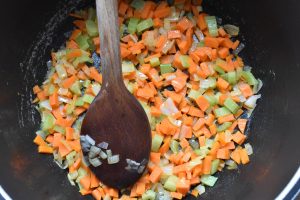 2. Must-have soffritto
2. Must-have soffritto
Soffritto is an aromatic base flavour for Bolognese sauce. It is made by heating olive oil in a saucepan and cooking finely chopped onions, carrots, and celery. In case you are tempted to add it, there is no garlic in Bolognese. Yes you read correctly, there is no garlic in Ragù alla Bolognese.
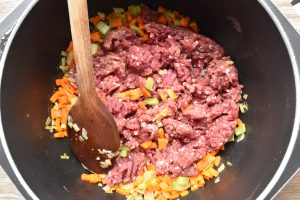
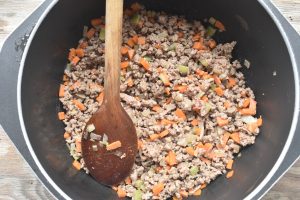 3. Meat selection and browning
3. Meat selection and browning
Ragù alla Bolognese starts with the prefect meat selection. A combination of beef chuck (stewing) steak and pork pieces like the thigh (which are fattier and tastier) make a flavoursome mince with a good meat to fat ratio. The mince should also not be too lean with the ideal ratio being 70% meat and 30% fat. Ask your butcher to freshly mince the meat for you. Using Wagyu beef and good quality pork such is more costly but makes a juicy and flavoursome ragù which is totally worth it. After the soffritto, brown the minced meat to bring out flavour and colour. This is not something you can set and forget. Use a wooden spoon to move the mince around to evenly brown all over.
4. Add white wine
While other variations of ragù such as Ragù alla Napoletana use red wine, Bolognese sauce requires dry white wine only. Once you have browned the meat, add the white wine and cook for about 5 minutes or until the wine has reduced.
5. Addition of tomato paste and Passata
Tomato paste is used to thicken the Bolognese sauce and add richness. There is a tip to get more intense flavour out of your sauce and is about the timing of the addition of tomato paste. Once you have added the soffritto, browned the meat and white wine has evaporated, it is time to add the tomato paste and stir for a few minutes which will caramelize and allow full flavour to develop. Then add Italian Passata, water and season with sea salt.
6. Wait for the magic to happen
The magic and richness develop with time. The more time you cook your ragù, the deeper the flavour. Again, this is not something you can set and forget. Bring to the ragù to the boil, then reduce heat to simmer for a minimum of 2 hours – as I said earlier, the longer the better. Cook until the ragù has reduced to your required consistency. Stir the ragù occasionally so that the sauce does not stick to the pot and burn and add more water, as needed to keep the sauce lovely and moist. Remove pot from the heat.
7. Add full-cream milk
Full-cream milk is a must-have ingredient in Bolognese sauce. Once you have removed pot from the heat, the milk should be added. Pour it in a slow steady stream, little at a time, stirring continuously until the milk is completely absorbed by the sauce. Milk serves to make the sauce rich and creamy.
8. Pasta choice
Once the ragù is ready, it is time to cook the pasta. Spaghetti Bolognese has a nice ring to it however there really are better choices of pasta. Bolognese sauce is best served with wider-shaped pasta like fresh egg Pappardelle. This is because the thick sauce blends better with a wide pasta. You could also use a ribbon shape pasta such as Fettuccine/ Tagliatelle or Mafalde, long ribbon pasta with ruffled sides.
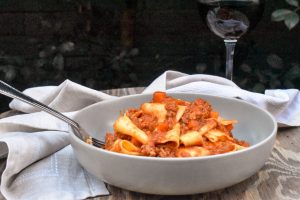 9. Add the final touches to serve the pasta
9. Add the final touches to serve the pasta
For some people this may be stating the obvious, but I am going to say it anyway. You don’t serve plain pasta on a plate with a big ladleful of sauce poured over the centre. Instead, you drain the pasta, add it to the stockpot with ragù and toss to combine. Why? Coating the ribbons of pasta in the rich, creamy Bolognese sauce adds superior flavour. If you have never eaten pasta this way, start now as you are missing out! Divide among deep serving bowls and lastly serve with grated Parmigiano Reggiano on top.
We have talked about how to make bolognese sauce, a delicious meal that will even impress Nonna. Get the full Pappardelle with authentic Bolognese sauce recipe! Don’t forget to make extra – yes go ahead and double the quantity you need and make 2 meals out of 1. Left over ragù is buonissimo!
Vanessa Bottaro
Vanessa is Creative Director of the Italian Spoon website and Author of The Italian entertaining cookbook, a collection of home-style Italian recipes and tips for entertaining in true Italian-style. In addition to cooking and taking photographs, Vanessa writes the recipes and blogs to bring the love of Italian cooking to life! The collection of recipes and blogs on the website have been inspired by travels to Italy and desire to share what she has learnt from the great ‘Mamma’s and ‘Nonna’s in her life!
Vanessa is an entrepreneur and wife to husband Simone and the mother of two beautiful kids Dante and Mia. Even so she was born and lives in Melbourne Australia, Vanessa has a deep connection to Italy. Perhaps it is the food, or maybe it is because it is the place where Vanessa met the love of her life, Simone to whom she has been happily married for so many years.
Latest posts by Vanessa Bottaro (see all)
- Italian Christmas menu 2022 - December 16, 2022
- 10 Show-Stopping Roast Ideas - November 18, 2022
- Healthy Italian food recipes - November 4, 2022
Recent Posts
-
16 December, 2022Italian Christmas menu 2022
-
18 November, 202210 Show-Stopping Roast Ideas
-
4 November, 2022Healthy Italian food recipes
-
21 October, 2022Tips to cooking the perfect pasta (just like nonna)
-
7 October, 20226 rules to make the perfect homemade Italian soup
